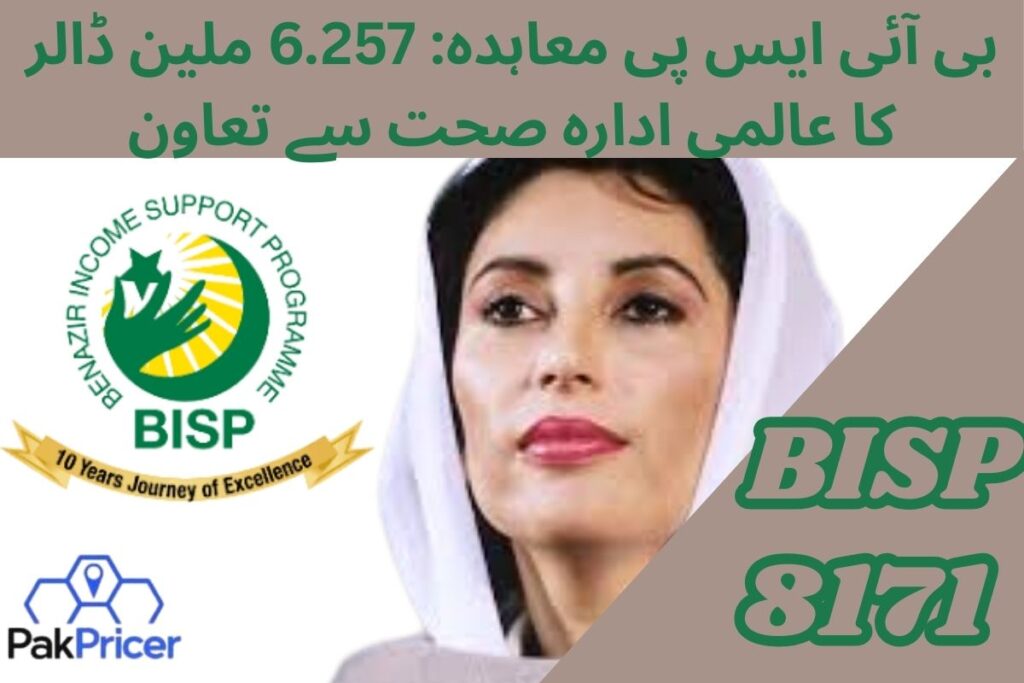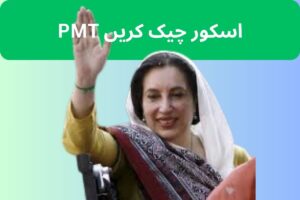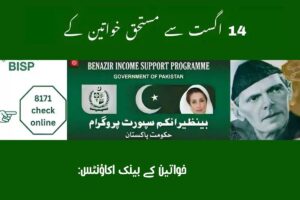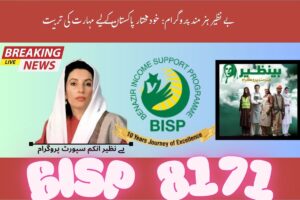WHO–BISP US$6.257 Million Nashonuma Agreement
The fight against malnutrition in Pakistan was boosted by the signing of a WHO–BISP US$6.257 million Nashonuma Agreement. This partnership will contribute to a better nutritional health of the mothers and children in Pakistan and being jointly pursued by the World Health Organization (WHO) and the Benazir Income Support Programme (BISP).
For years, Pakistan has reported distressing levels of child stunting and maternal malnutrition. These threats not only create adverse public health effects, but cultivate poverty in the communities they touch. Leveraging WHO’s experience in global health and BISP’s extensive network in Pakistan, the Nashonuma Programme has been further scaled up to deliver nutritious meals, health care and services to millions of families.
This article discusses the Nashonuma Programme, the significance of the additional funding, and how life-changing these funds will be for women and children in Pakistan.
Background: Malnutrition in Pakistan
Malnutrition continues to be one of the most critical public health issues in Pakistan. Even with advances in learning, technology, and infrastructure, too many families are still struggling to put healthy food on the table each day. Poverty, lack of awareness and poor health services contribute to this.
Stunting in Children
Almost 40 percent of Pakistani children under age 5 are stunted, or shorter than they would be if they were of average height for their age. It is not just a growth problem but also hampers brain development and learning mercy for children.
Wasting
About 18 percent of children are wasted, meaning they’re dangerously thin for their height. That makes it more likely sickness and death could result.
Maternal Malnutrition
Large numbers of women are suffering from iron deficiency, anemia and malnutrition which is detrimental to their own health and the health of the unborn foetus as well.
The Nashonuma Programme was introduced to address these grievances, and the WHO–BISP alliance enhance its national potential to fight malnutrition.
What is the Nashonuma Programme?
The programme, called Nashonuma (Urdu for “growth”), is centred around the first 1,000 days – from conception up to a child’s second birthday. This is known as nutrition’s “golden window” and is crucial for a child’s lifelong health and development.
Core Objectives of Nashonuma
Provision of supplemental nutrition to women and children
Advocating and adopting exclusive/half-exclusive breast feeding and safe breast feeding practices for infants
1:Linking health services with BISP’s cash support for families
2:Providing nutritional supplements to mothers and children
3:Promoting exclusive breastfeeding and safe infant feeding practices
4:Offering regular health check-ups for pregnant women and young children
5:Distributing specialized food packages to combat malnutrition
6:Raising awareness about hygiene, nutrition, and child care
7:Dispersing customized food kits to fight malnutrition.
Promoting hygiene, nutrition, and child care
Health services tied with BISP’s cash support to families
Nashonuma Centers act as the focal point where families receive not only financial aid, but also nutritional support and education to lead healthier lives.
Details of the WHO–BISP Agreement
The US$6.257 million agreement is not a one-off donation, rather it is an investment in Nashonuma services that will focus on scaling and upscaling service delivery.
How the Funding Will Be Used
Reinforce Nashonuma Centers: Centres will be opened in new and deprived districts.
Nutrition Support: Supply of fortified supplements to pregnant and lactating women and children under two years of age.
STRENGTHEN HEALTH WORKFORCE Training of health workers : Doctors, Nurses and CHWs to provide quality services.
Tracking and accountability: Digital systems will monitor funding to guarantee money is spent transparently and leads to best results possible.
Awareness Camps: Educative activities to make families aware of nutrition, hygiene and maternity.
This indicates an understanding among both parties that the battle against malnutrition in Pakistan must be built upon international best practices and accepted health protocols.
Why This Agreement Matters
This collaboration is more than just a business deal; it is a lifeline to vulnerable communities in Pakistan.
Tackling Stunting
Stunting affects around half of the children under five in Pakistan, making it a national health emergency, and this agreement goes to the heart of Pakistan’s health crisis.
Supporting Mothers
By addressing the nutritional needs of mothers both during pregnancy and after birth, the programme contributes to breaking the intergenerational cycle of malnutrition while also enabling healthier pregnancies and births.
Reducing Poverty
Malnourished children tend not to do well in school, earn lower salaries as adults and get stuck in poverty as adults. The programme has long-term effects on the economy by enhancing nutrition.
Aligning with Global Goals
The deal is consistent with the United Nations Sustainable Development Goals (SDGs), in particular Goal 2: Zero Hunger and Goal 3: Good Health and Well-being, ensuring that Pakistan continues to make progress towards achieving these global ambitions.
Benefits for Families
With WHO’s backing, the Nashonuma Programme is set to deliver lasting benefits to families across Pakistan.
For Mothers
Prenatal and Postpartum Health Screenings for Free
Supplemented foods designed to prevent anaemia and malnutrition
Advice on breast-feeding and weaning in safety
Reduced risk of pregnancy complications
For Children
Nutrition support Prevent access to fortified rationa
Regular growth monitoring
Immunization and treatment of disease in early stage
Improved hygiene practices for caregivers
By meeting these needs, the programme contributes to a healthier society, in which children have the opportunity to succeed.
Involvement of WHO in the Partnership
WHO’s role in this partnership is more than the provision of money. WHO also offer technical advice and monitors the programme’s compliance with global nutrition standards. Key contributions include:
Development of training packages for health workers
Facilitating the research and data collection that allows us to gauge our progress
Coordination with other donors and organisations to ensure coherence and effectiveness
WHO’s role helps to ensure that the programme is scientifically sound and effective.
Broader Social and Economic Impact
What we eat affects almost every metric of life — from learning to work output to poverty. This partnership indirectly strengthens, by way of improved nutrition:
Academics: Healthy students can better concentrate and achieve more in school.
Economic Growth: Less money being spent on healthcare by families, meaning they can save more.
Workforce healthiness: A healthy workforce is a productive and financially contributing workforce.
Gender Equality: Women will have greater access to healthcare and have a greater say in decision-making processes.
And in the end, it will create a virtuous cycle of health and prosperity that will echo down the generations.
Challenges and the Road Ahead
Despite the agreement, challenges remain:
Connectivity to Remote Areas: It is difficult to reach the rural and remote areas where infrastructure is limited.
Traditional Feeding: There is a conflict between traditional ways of feeding (i.e. what was done before nutrition guidelines were formulated) and modern evidence-based guidelines in some locations.
Sustainability: Long-term survival is going to have to depend on continued financial support, and good will on the part of the government yard.
Ignorance: A lot of families are unaware about the kind of food products and the hygiene practices they need to follow.
WHO and BISP are meeting these challenges – with the assistance of digital instruments, community engagement, and collaboration with local leaders.
Frequently Asked Questions
What is Nashonuma Agreement between WHO and BISP?
‘This is a US$6.257 million collaboration to supplement the Nashonuma Programme promoting maternal and child nutrition in Pakistan.IntoConstraints
Who benefits from the programme?
Pregnant and breast-feeding women and children under the age of 2 will be the main recipients.
How will the funds be used?
The money will help to scale up Nashonuma Centers, to disseminate fortified food, to train health workers and to strengthen monitoring systems.
Why is an issue around child nutrition so important for Pakistan?
Close to 40% of children under five are stunted, impairing their health, schooling and future earnings.
Will the programme help rural areas?
Yes, the program will focus on rural and under-served regions which have the highest malnutrition incidence.
Conclusion
It signifies an important moment in Pakistan’s fight against malnutrition, the WHO–BISP US$6.257 Million Nashonuma Agreement. It is a testimony to what can be achieved by putting money on the health of mothers and children as a cornerstone of national development.
Through better nutrition in the first 1,000 days of life, Pakistan is investing in a healthier, more prosperous future. This alliance is not about short-term aid — it’s about more than preventing suffering now.!* It’s about making sure we can prevent it or address it in the future, so that the boys and girls of Pakistan can grow up with the opportunity and hope they deserve.
5







